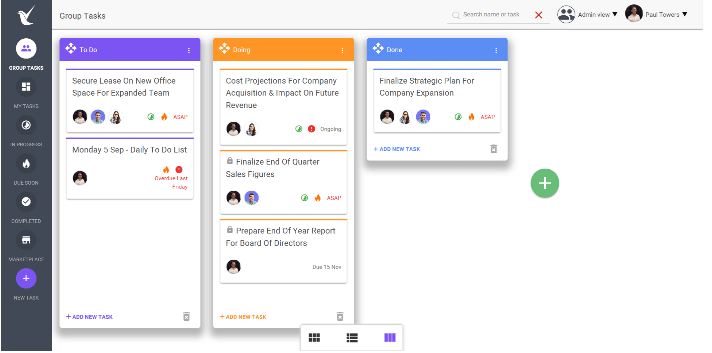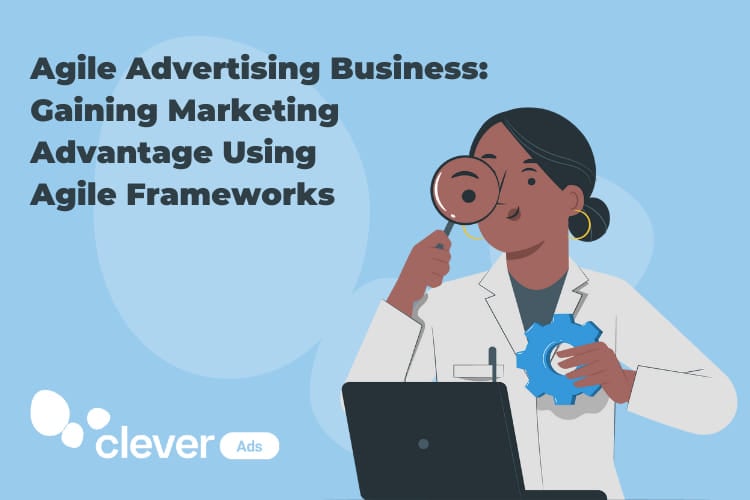Agile Advertising Business: Gaining Marketing Advantage Using Agile Frameworks
The modern advertising landscape is fast-paced — marketers need to constantly test their ideas and quickly find what works in an ever-changing digital marketing environment.
And marketers have all the tools to do that: digital tools anhttps://aloa.co/blog/hire-software-developers platforms allow advertisers to gain unprecedented amounts of data about their clients, A/B test a myriad of strategies, and locate target audience with laser-like precision. Marketers also use marketing data pipeline which helps them to deal with a lot of data coming from different sources such as web analytics, search ads, social ads, etc
Yet almost 60% of marketing initiatives take a minimum of six months to make it to market, and only 36% of CEOs believe their marketing departments can respond to transformative changes.
Why?
Above all the other reasons is an outdated, top-to-bottom waterfall approach to project management.
The old “annual plan, report in 3 months” way of doing things doesn’t cut it anymore: 69% of marketers find annual planning challenging due to the fast pace of change in the industry, whereas 75% of modern marketers are threatened by their more agile competitors.
The only way to survive in a modern advertising world is to become agile yourself.
In this article, we’ll cover how advertising teams use agile methodology to become more flexible, customer-driven, and collaborative in front of modern marketing challenges.
What’s Agile Marketing and Advertising?
Agile marketing is a project management approach where self-sufficient cross-functional marketing teams deliver projects in iterative cycles while continuously tracking and improving their performance.
The agile approach was popularized by software development teams that wanted to transcend the limits of legacy waterfall project management and become more flexible, value-driven, and efficient.
Seeing the benefits of the Agile approach in software, marketers decided to adapt agile values to their own industry. In June 2012 a group of progressive marking professionals came up with seven key values that became known as Agile Marketing Manifesto:
- Validated learning over opinions and conventions
- Customer-focused collaboration over silos and hierarchy
- Adaptive and iterative campaigns over big-bang campaigns
- The process of customer discovery over static prediction
- Flexible planning over rigid planning
- Responding to change over following a plan
- Many small experiments over a few large bets.
To implement these values in their work, marketing teams adopt agile frameworks such as Scrum, Kanban, and Scrumban.
Every framework consists of specific guidelines and ceremonies that allow agile teams to deliver specific customer-oriented results at the end of short, iterative cycles of work called Sprints.
Note: A great tool to keep agile marketing teams aligned is asynchronous scrum meetings run in Slack. Geekbot lets teams hold standups that are (1) faster and (2) less disruptive. If you’re curious, learn more here, then feel free to sign up for a free 30-day trial.
Benefits Of Agile In Advertising
Here are the main benefits of applying the agile methodology in marketing and advertising:
- Speed to market. Agile encourages advertising teams to deliver valuable concepts and results at the end of every sprint, so marketers can quickly test and roll out new ideas every several weeks.
- Improved productivity. Through specifically defined retrospective meetings and backlog activities agile teams can regularly track their performance and find new ways to optimize their process: try new tools, data sources, and ideas.
- Enhanced collaboration. Short and effective agile meetings facilitate close collaboration between different marketing and advertising professionals, which is a powerful advantage compared to more traditionally siloed marketing departments.
- Flexibility. Another advantage of short Sprints is that advertising teams don’t have to commit to several months-long plans and instead adjust their strategy and goals within a short period of time.
- Customer-driven success. One of the core values of agile methodology is a strong focus on delivering value to the end-user. The agile approach allows advertisers to prioritize real customer preferences over abstract and untested predictions.
How Agile Works in Advertising
Agile is a broad term that inspired many concepts and techniques that agile marketers can apply in their work. Let’s cover the three important concepts in agile marketing: framework, team, and backlog.
Agile Framework
An agile framework is the backbone of any agile implementation and consists of instructions and workflows that teams need to follow to achieve meaningful results.
There are two agile frameworks, Scrum and Kanban, and their combination, Scrumban, that advertising teams can use to organize their work.
Scrum encourages marketing teams to work in short Sprints and deliver working solutions at the end of every Sprint.
Scrum consists of specific meetings, called ceremonies (e.g. Daily Standups, Retrospectives), and supporting items called artifacts (Sprint Backlog and Product Backlog).
Traditional advertising team workflow example: gather client requirements upfront, brainstorm concepts, plan marketing tasks for months ahead, hope everything comes together in the end.
Scrum advertising team workflow example: generate a few ideas and concepts around client requirements during the first Sprint, produce several working prototypes during the second Sprint, test ideas with focus groups during the Sprint #3, and put the most effective concepts into production afterward.
To ensure proper Scrum implementation there are certified Scrum Masters who help new Scrum teams learn the ropes.
Kanban is a more flexible system compared to Scrum. Teams that practice Kanban break their workflow into several critical stages and move every task between columns that represent these stages.
For the advertising team, the Kanban board may consist of the following stages: Idea, Test of Concept, Feedback, Validation, Implementation. Or something far simpler: To Do, Doing, and Done.

The main idea of Kanban is that every column, or stage, can host only so many tasks at once.
For example, a marketing team decides they can only have four tasks in their “Doing” column and complete at least one before starting to work on others.
Kanban allows agile marketing teams to identify bottlenecks in their workflow, effectively allocate resources, and have a bird-eye view of a marketing pipeline.
For example, using Kanban, an advertising team may reveal that the majority of tasks that slow down the pipeline are related to video editing and hire freelance video editors to help with the load.
Scrumban is a combination of Scrum and Kanban frameworks. The Scrum part helps marketing teams follow an established rhythm of production, whereas the Kanban counterpart can help teams to manage and optimize the production pipeline.
Agile Advertising Team
Agile teams are cross-functional and self-sufficient, which means there are specialists from different departments that together have all the required competence to produce the desired output.
While at the core of agile advertising teams may be PPC specialists, outreach specialists, SMM, and media buyers, the team may also include developers and SEO specialists to implement more demanding projects such as building landing pages or forming a long-term content strategy.
On average, agile teams consist of 7 to 12 people, but that mainly depends on what frameworks the team is using. Scrum teams are at their most effective with no more than 9 participants, whereas Kanban can help manage teams of a bigger size.
Agile Backlog
Traditional marketing can be at times very abstract, leaving lots of room for interpretation and thus the poor implementation of goals.
In an agile world, the way you formulate and organize tasks is as important as completing them.
That’s why both Scrum and Kanban pay so much attention to how teams should manage their goals.
In Scrum, marketers have to regularly update their tasks during Sprint Planning and Backlog Grooming ceremonies.
In Kanban, teams need to track how many tasks are at every stage of a marketing pipeline and how long it takes for a task to move from one stage to another.
In addition to that, any agile framework encourages advertisers to write specific and customer-focused tasks. It’s far more effective to track the completion of specific tasks, whereas tasks with the end-user in mind have the potential to bring the most value.
The Future Of Agile Advertising
According to Forrester’s research, 96% of marketers believe that a change in marketing and technology will continue to accelerate.
There’s no more room for 6-month plans implementations — modern customers are both savvy and spontaneous.
Agile marketing allows advertisers to quickly test new concepts and get to the market faster than it changes. Today agile is an advantage, but tomorrow it may become a requirement.





